Museum Studies Minor
Ray Zhang '24
By Contributing Editor, Colgate News
History major Ray Zhang ’24, from Ningbo, China, describes his summer assessing the satisfaction of visitors to a new exhibit at Adirondack Experience, The Museum on Blue Mountain Lake.
What is it like to spend an entire summer immersed in the Adirondack forest? As an Upstate Field School Fellow, I had the privilege not only to discover this firsthand, but also to engage in meaningful work at Adirondack Experience, The Museum on Blue Mountain Lake, nestled in the heart of the Adirondacks.
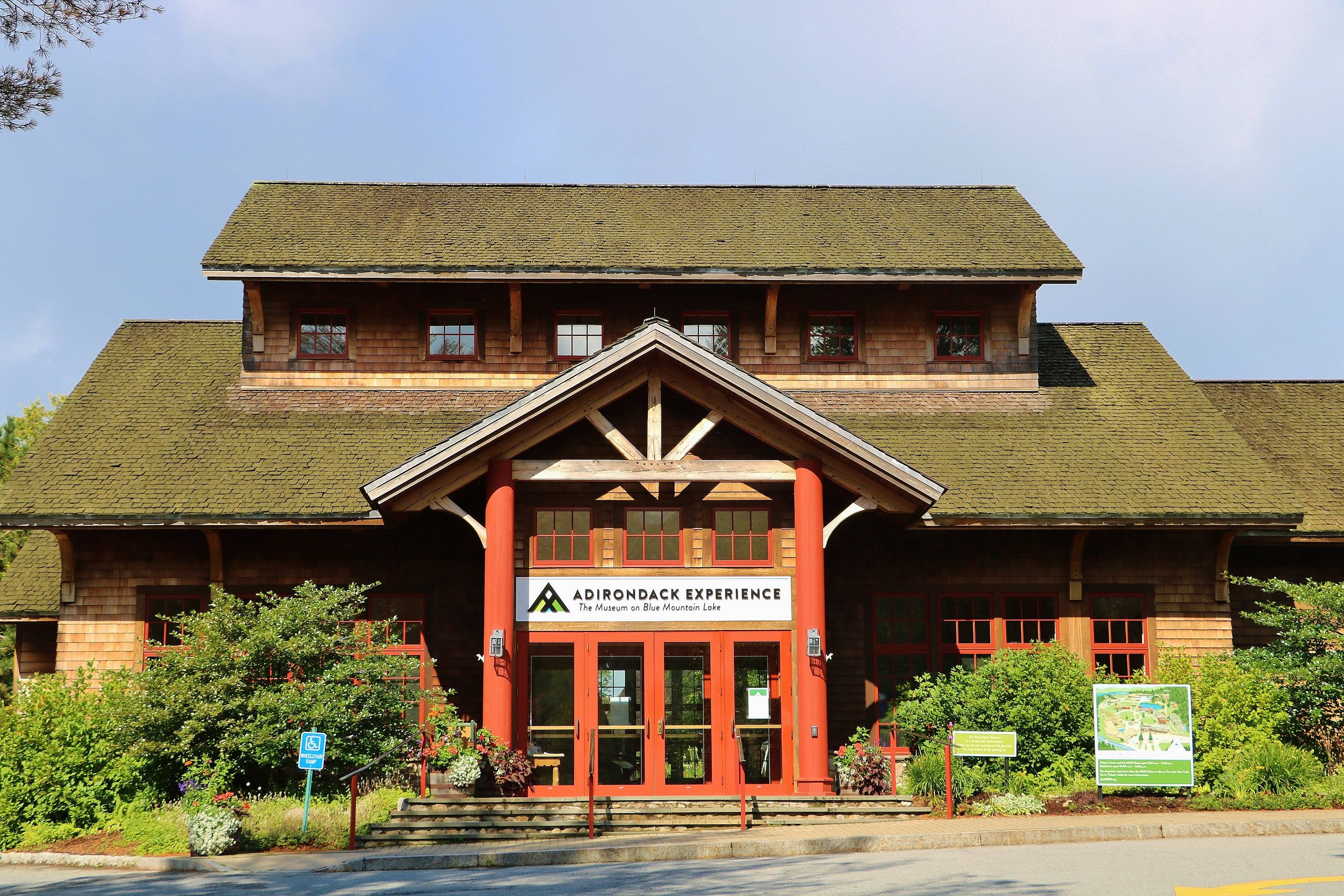
The Adirondack Experience™, The Museum on Blue Mountain Lake
As the largest cultural institution in the Adirondacks, the museum was the perfect place for me to develop my expertise in the museum studies field. Opened in 1957, the museum is a nonprofit organization that preserves and interprets the diverse stories of Adirondack history, culture, and people to spark thoughtful dialogue and help shape the Adirondacks. Visitors to the museum can experience these vast histories and heritage through the more than 30,000 objects, 70,000 photographs, 9,000 books, and 800 original manuscripts.
The bulk of my internship as an audience evaluation interpretive fellow revolved around a brand-new exhibit that opened on July 1 called Artists & Inspiration in the Wild. This exhibit illustrates how the natural features of the Adirondacks — light, forests, water, and mountains — have sparked the creative visions of painters, sculptors, and expert artisans for hundreds of years. Featured within the exhibit are a wide variety of paintings and collections from the 19th century to the present day. The exhibit is capped off with a unique Adirondack-style maker space, designed by artist Barney Bellinger, where visitors can explore and create for themselves.
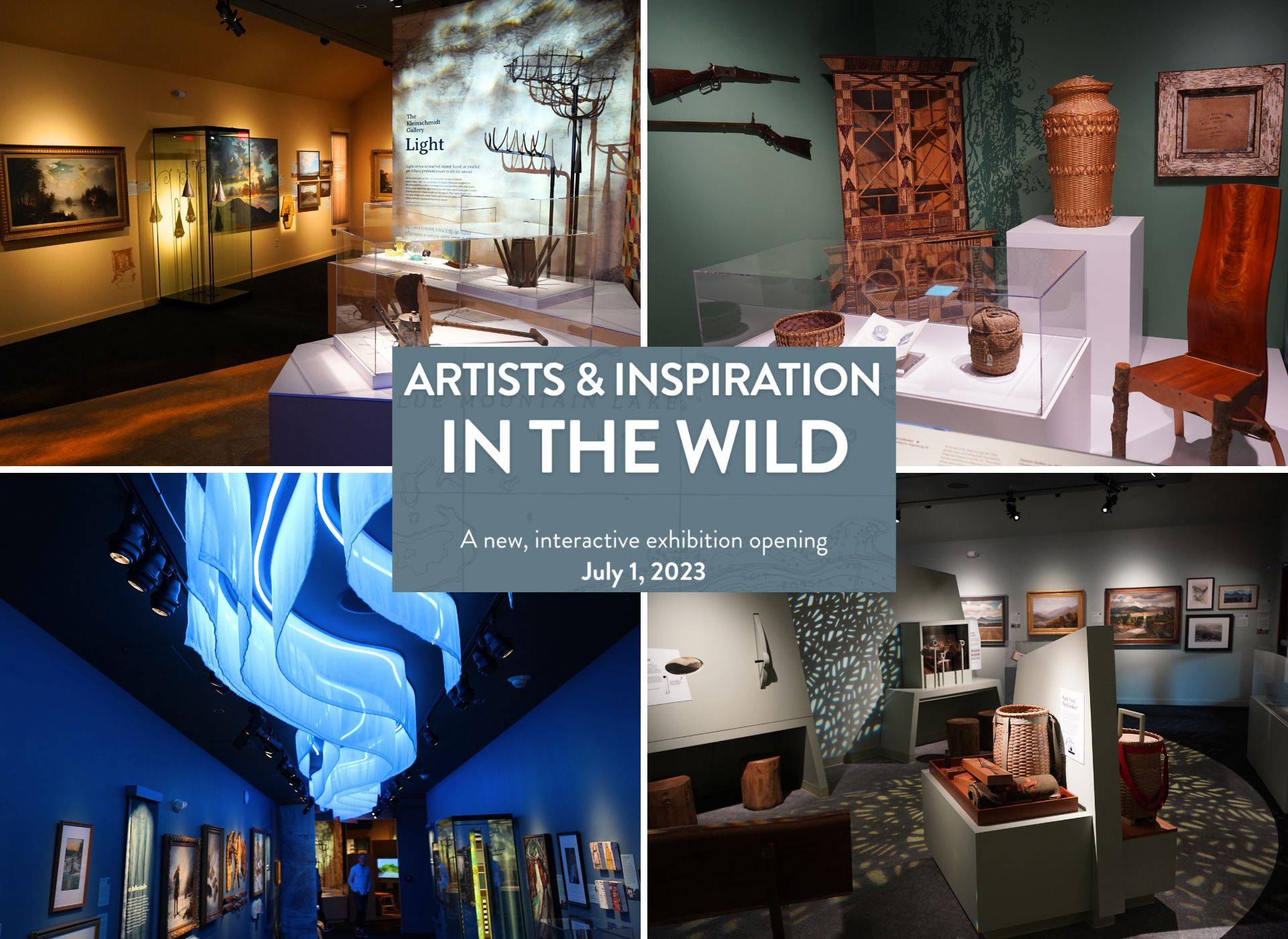
The advertising poster for the new exhibition
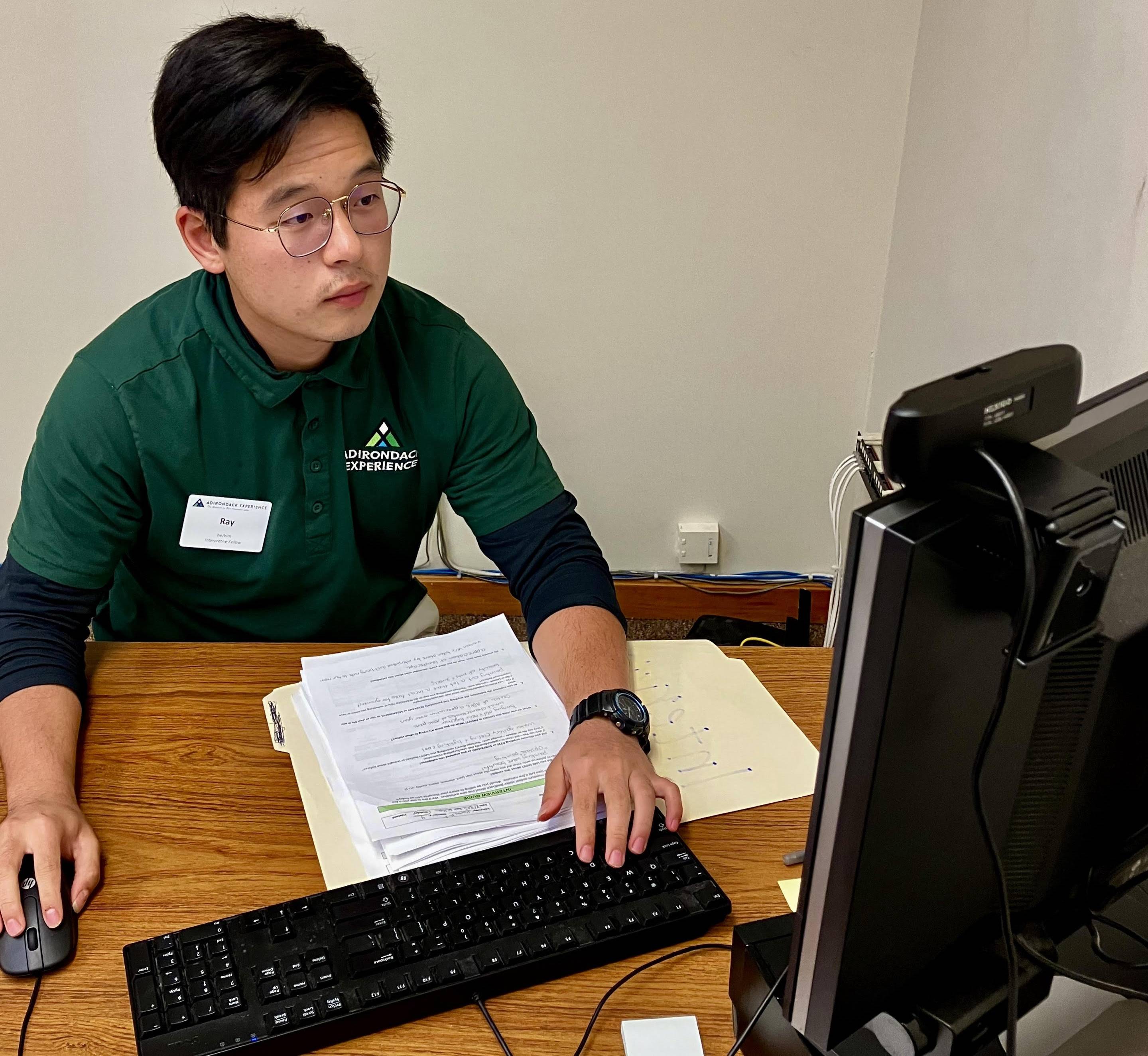
Ray cataloging and assessing the results of museum visitor satisfaction surveys
In order to determine how satisfied visitors are with their time in the exhibit and find new ways to improve their experiences, I both timed and tracked visits as well as surveyed visitors to gain insights. I also worked with community partners to create marketing programs to promote the exhibit at local community events such as Adirondack Experience’s Summer Concert Series, Rustic Furniture Fair, and Adirondack Artisan Festival.
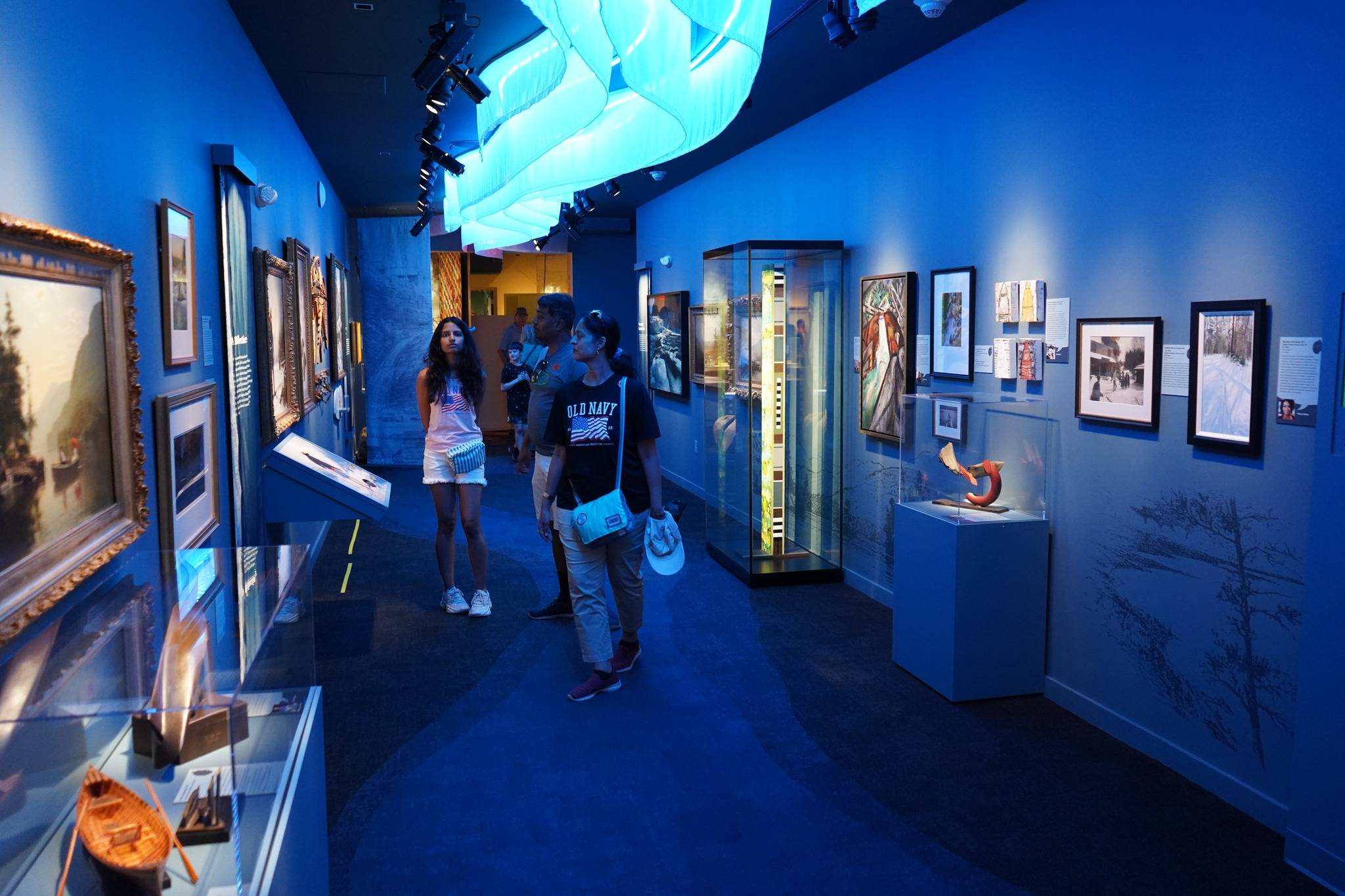
Visitors exploring the Water Gallery, one of five galleries within the museum
Considering the ongoing shifts in populations within the North Country, combined with the museum’s continuous efforts to market the Adirondack region to diverse audiences, I believe the data I have collected will be invaluable in helping Adirondack Experience, The Museum on Blue Mountain Lake, to plan for the future of its exhibits. In addition to equipping the museum with this valuable information, my research also helped me to feel confident in recognizing and responding to the wants and needs of visitors within the museum space. From this experience, I have learned how to view a museum space through the diverse perspectives of its many visitors, and I am so grateful to have acquired this skill. I am looking forward to using my newfound skill set to further address community needs within museums in the future.
Museum Studies Alumni
Elizabeth Shaw '22
By Elizabeth Shaw, Education Intern at the Fenimore Art Museum
My first impression of the Fenimore was based on the grounds. The mansion and the lake which it overlooks are resplendent, and the building is even lovelier inside.
My boss, the manager of Arts Education, took me on a tour and explained the organization of the institution and where I would fit. I had my very own desk on the top floor of the museum and access to the Fenimore’s research archives to complete my project. My main research project involved an upcoming exhibition on the “Heroines of Abstract Expressionism.” The Fenimore Art Museum had never before featured an exhibition of abstract art, so this show was new both for the museum and for their visitors. My job was to craft a docent guide to introduce both docents and visitors to interpreting abstract art. I started by researching each artist whose work was coming to Cooperstown and popular methods of teaching abstract art. The movement of abstract expressionism represented a move away from figural representations of things to emotive representations of experiences. I decided to encourage docents to follow this trend by starting off with figural works and working towards abstraction.
Cave #24 Red Oxide Wall, 1954, Elaine de Kooning photo courtesy of Chris Rossi
I included this piece as an earlier stop in the tour because it is quite figural. I encouraged docents to point out the active paint strokes in this piece, and to inform visitors that although the end result may look full of movement and a little chaotic she actually painted pretty slowly and with a measured hand. This series was inspired by trips to prehistoric caves in modern-day France. Those artists also depicted moments charged with emotion, and their fears and triumphs live on today.
September Twenty-Third, 1980, Lee Krasner photo courtesy of Chris Rossi
This piece was saved for the end of the exhibit. Krasner achieved this effect by collaging older canvases that she was unhappy with, just as we recycle our knowledge and experience as we naturally go through life. I invited docents to employ aspects of “Visual Thinking Strategies” (a program of interpretation where guides are permitted only to ask open-ended questions). In order to ease the experience, I suggested that docents come up with some answers themselves to prompt their tour.
The Makings of a Museum
When I wasn’t spending my time learning about the heroines of abstract expressionism, I got to help out with other departments. In my summer at the Museum, I assisted in the installation of two exhibits and in a collections inventory and chauffeured two V.I.P.s to the Fenimore Gala. I also helped with the Education department’s programming for members of all ages, from facilitating lectures to letting kids touch wolf fur of the same kind used in the regalia on display. While helping with the curation team, I learned just how much work goes into exhibits that is meant to go unnoticed. For instance, after hanging printed text panels, I was tasked with painting the nails white so they would blend in with the background. While setting up an exhibit on face jugs I carefully cut a woolen imprint of each unique jug - large enough so the paint on the stands wouldn’t scrape onto the works of art and small enough so that no passerby would be able to notice. Even hanging a painting involved lots of measurements and mental math so it would be the closest to eye-level for most viewers. Because the Fenimore is a relatively small museum, I got to learn how each part of the museum worked with others to perfect visitor experience and keep the museum running smoothly.
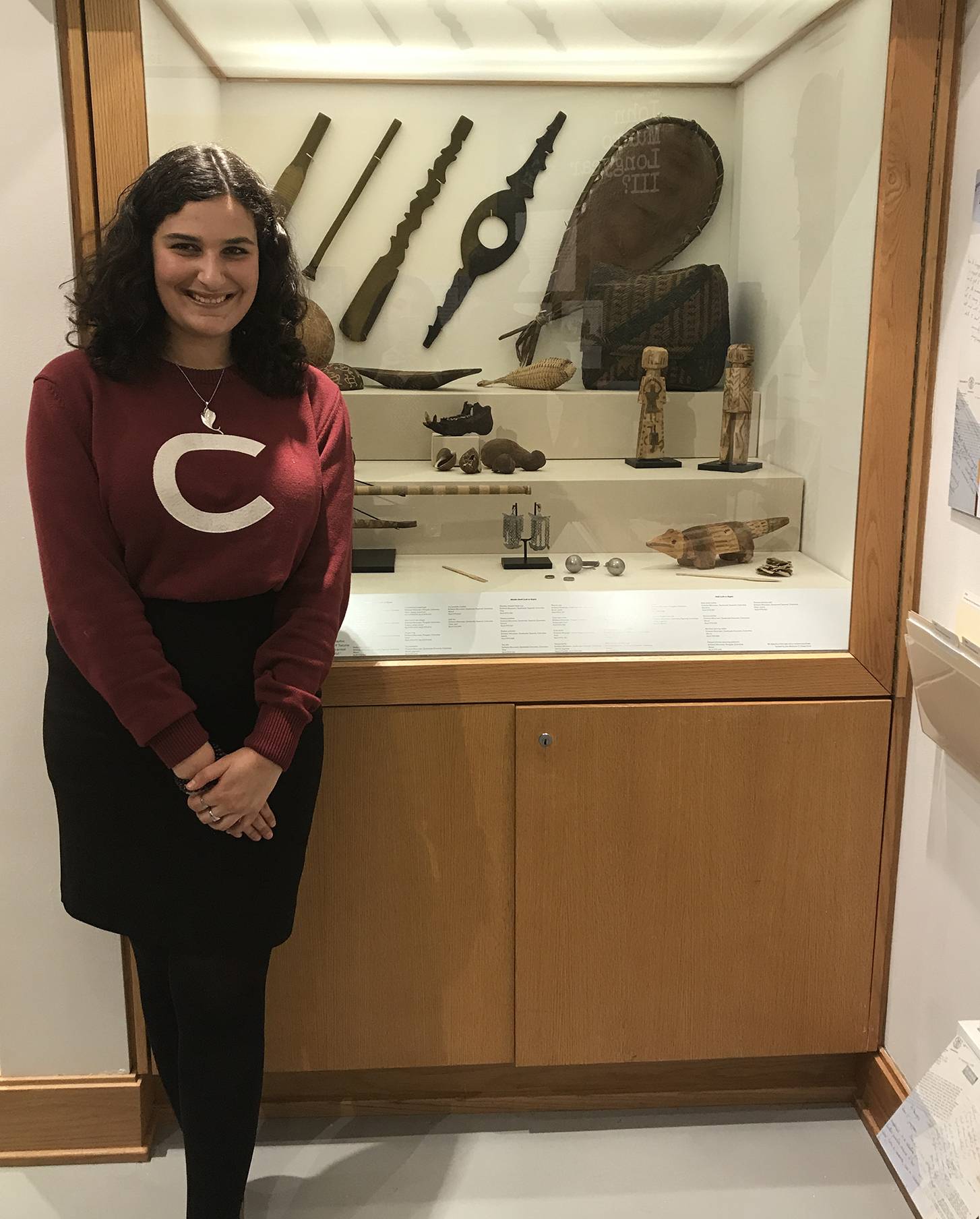
Museum Studies Alumni
Emily Kahn '19
a) Where did you do your internship?
Nantucket Historical Association. I worked as a Historical Interpreter for 5 historic house museums.
b) What are you up to now?
I currently am completing an M.S. in Historic Preservation at Columbia University Graduate School of Architecture, Planning & Preservation (GSAPP). I anticipate I will graduate in Spring 2021.
c) Would you like to say anything about the MUSE program, what you got out of it, how it has helped you in your career path so far, or anything else that might entice potential students?
The Museum Studies program not only prepared me for graduate school and for a career in the heritage field but also shaped how I see and contemplate the world. Through the lens of museology, I learned new forms of critical and creative thinking, considered the inequitable ways various cultures are represented in museums and beyond, and gained firsthand experience in collaborating with interdisciplinary groups of people with views different than my own. I am a better professional, student, and global citizen for having gone through this program.
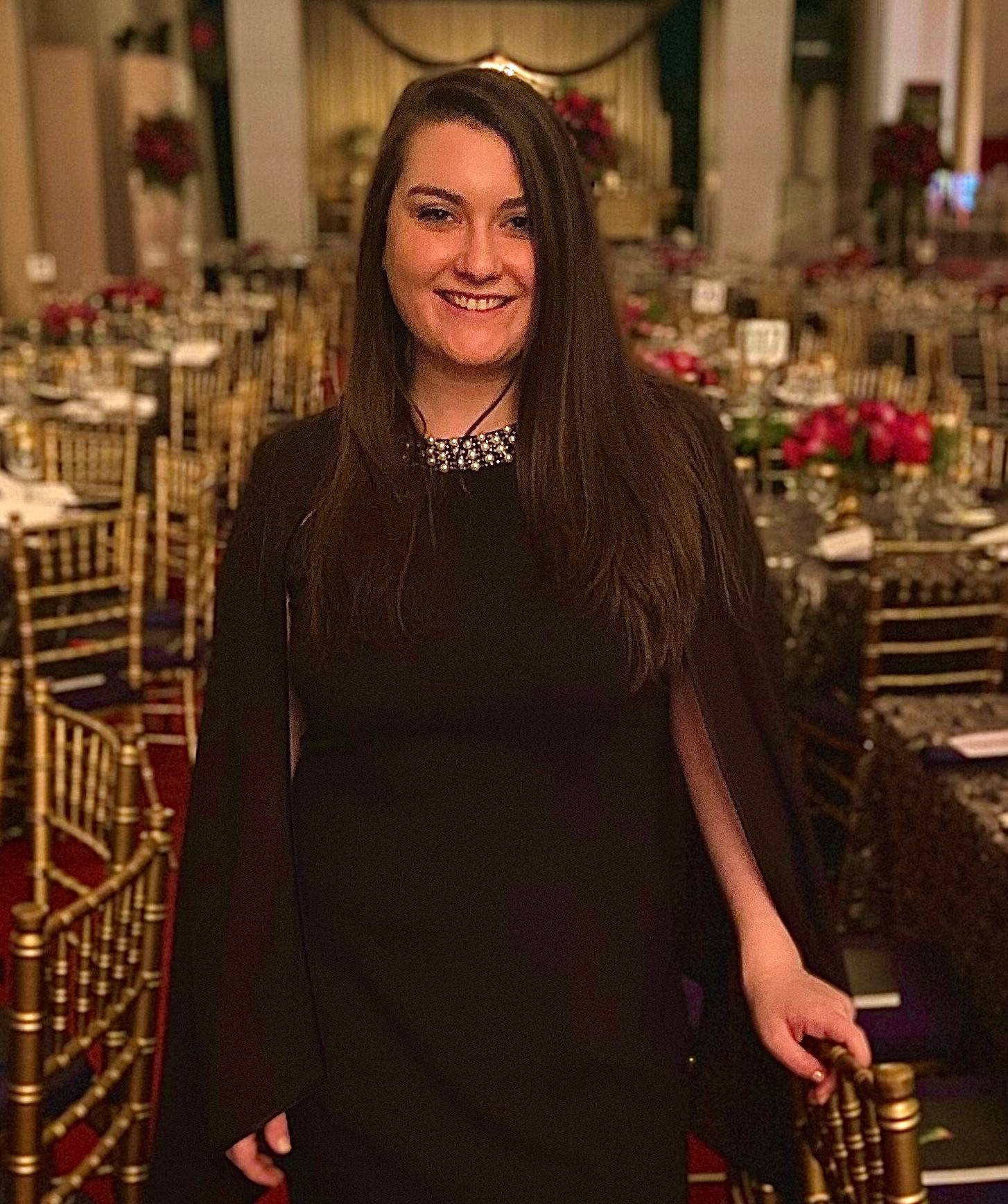
Museum Studies Alumni
Claire Pandaleon '18
a) Where did you do your internship?
I was the Individual Development intern at the Solomon R. Guggenheim Museum in New York City during the summer of 2017.
b) What are you up to now?
I am currently the Assistant of Major Gifts at the John F. Kennedy Center for the Performing Arts in Washington, DC. Although the Kennedy Center is not considered a museum, it is by Act of Congress the nation's National Cultural Center and the designated living memorial to President John F. Kennedy. In my free time, I'm also a member of the Phillips Collection Contemporaries, a group of young art-loving professionals in the DC area.
c) Would you like to say anything about the MUSE program, what you got out of it, how it has helped you in your career path so far, or anything else that might entice potential students?
The MUSE program provided a rigorous, interdisciplinary approach to understanding the world's cultural sector. The coursework prepared me for a career within cultural institutions and equipped me with the ability to question these establishments and my place within them. Practically speaking, gaining any level of degree in museum studies as an undergraduate is quite rare. Therefore, if a career or further education within the cultural realm interests you, this is a fabulous way to strengthen your resume with concrete experience and expertise.
More holistically, it's also profoundly fascinating and offers the opportunity for life-long learning. The vast array of topics explored--heritage, collective memory, cultural ownership, institutional power, etc.--are ingrained in our societies and will continue to require criticism. I find myself grappling with subject matter from my old MUSE syllabi regularly, both at work and in my personal life. It seems to become more relevant as time goes on.